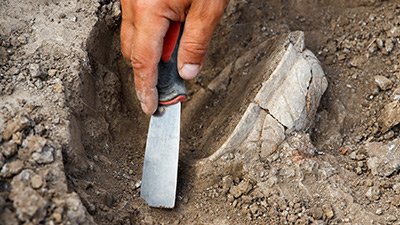
ANE Tablets Discovered in Nuzi: Close to the Time of Abraham
In the ancient Iraqi city of Nuzi (modern-day Yorghan Tepe), there were excavations from the 1920s through the 1930s. But regime changes, wars, and instability in the region stopped archaeological digging and slowed the sorting and cataloging of artifacts during the rest of the twentieth century. However, just within the past decade, more stored clay tablets have been researched, translated, and published.
As new information is published, it becomes clear that many of the ancient customs we see recorded in the lives of the patriarchs (Abraham, Isaac, and Jacob) were traditional customs that are also recorded in secular sources.
Nuzi was originally an Akkadian city (named Gasur), southwest of the city of Arrapha (modern-day Kirkuk), but it was conquered and renamed by the Hurrians in c. 1900 BC. Some of the over 3,500 clay tablets found were from the Akkadian city (c. 2150–1900 BC), but the bulk are from c. 1600–1400 BC. As new information is published, it becomes clear that many of the ancient customs we see recorded in the lives of the patriarchs (Abraham, Isaac, and Jacob) were traditional customs that are also recorded in secular sources.
Why the Nuzi Tablets Are Important
As we read Genesis 12–50, there are many aspects of the legal customs and traditions of cultures described that are somewhat hard to understand in our current time period. For example, why would Abraham believe that if he had no children, his steward Eliezer of Damascus would be his heir (Genesis 15:2–3)? What about other relatives (brothers, cousins, nephews, etc.)? When we think of estate transfers today, we think of relatives dividing up the estate (either according to the written will of the deceased or in lieu of there being a will). However, dozens of adoption tablets have been found at Nuzi, some of which mention this subject of adopting someone in order to have an heir.1 We know that Abram’s (later Abraham) brother Haran had died earlier (Genesis 11:28) and are not told if his other brother Nahor was still alive at the time of Genesis 15. Lot was alive but had already moved to Sodom (Genesis 13:11–13). So it does seem probable that, with the exception of Laban, most of Abram’s kin were dead (or like Laban, not close geographically).
But that is just one custom mentioned among many that are also recorded in the Nuzi tablets. Others include the practice of a barren wife providing her husband with a concubine, as seen in Sarah (or Sarai) giving Hagar to Abraham (Genesis 16:1–2); business transactions conducted at the city gate, as in Abraham’s purchase of the field and cave of Machpelah near Hebron (Genesis 23:1–20); both Abraham and Isaac presenting their wives to foreign rulers as their sisters (Genesis 12:10–20, 20:2–6, and 26:1–11).2 Scripture records that Sarah was Abraham’s half-sister, but the same could not be said of Isaac and Rebekah. But the Nuzi texts reveal that in Hurrian culture, “Marriage bonds were profoundly solemn, with a new bride assuming the dual status of ‘sister’ and ‘wife,’ terms that could be used interchangeably in legal documents.”3
So as not to belabor the point with too many examples, I’ll just mention this last one, which has been puzzling to even conservative scholars. In Genesis 31, we read the account of Rachel stealing her father’s “household gods,” or teraphim. Laban reacted strongly and set out on a furious pace to confront Jacob (whom he believed had stolen them). But why all the fuss about a few figurines, and why would Laban demand a boundary marker from Jacob (Genesis 31:51–52) when he did not find the teraphim?
Previous to the discovery of the Nuzi documents, the whole situation was obscure, and it would have been equally so at the time of the Israelite kingdom when, according to the critics, the story would have been composed. The tablets from Nuzi show that according to Hurrian custom at that early time, if a man desired to appoint a son-in-law as his principal heir he would turn over to him his household gods. After the man’s death, appearance in court with the household gods would be accepted as proof of such a disposition. Rachel was trying to secure all of Laban’s property for her husband, and Jacob was rightfully indignant at being accused of attempting such an underhanded trick. The whole incident becomes understandable in the light of these facts, and it becomes clear why Laban, still suspicious, desired that a boundary stone be put up at Mizpah, and that Jacob should swear that he would not pass over this boundary in order to do him harm (31:44–53, esp. v. 52). The Nuzi tablets make it clear that a great part of Laban’s reason for this was his desire that at his death, the remainder of his property should go to his own sons and not be taken away from them by Jacob. It is good to note that later Jacob demanded that any strange gods in the hands of his people be buried (35:2–4), and that at no time did Jacob try to make false use of these teraphim.4
The Bible Testifies About Its Own Historicity
The Genesis traditions recorded in Scripture might be viewed as prototypes of these Hurrian customs, even if not precisely identical to them.
While the Nuzi tablets corroborate the ANE customs in the biblical accounts of Genesis 12 and onward, they are actually in most cases from a later time (about the time of Joseph through to the Exodus). How then do they help us understand the time of Abraham, Isaac, and Jacob? The Genesis traditions recorded in Scripture might be viewed as prototypes of these Hurrian customs, even if not precisely identical to them.
According to ABR, “The customs at Nuzi had begun as early as patriarchal times and continued for hundreds of years thereafter in virtually unbroken succession. . . . The best that can be made of the Nuzi material is to see it as indicative of common and longstanding cultural and legal habits stretching over a millennium or more.”5
Furthermore, as ABR notes (and we wholeheartedly agree with): “Should archaeological data and biblical data appear to be stalemated or impossible of resolution, but a decision must nevertheless be made one way or the other, the believer must always permit the living Word of God to trump the silent witness of pots and other artifacts.”6
Footnotes
- “Nuzi,” Encyclopedia of the Bible, Bible Gateway, accessed July 3, 2024, https://www.biblegateway.com/resources/encyclopedia-of-the-bible/Nuzi.
- Philippe Bohström, “The Nuzi Tablets: Bronze Age Records from the Time of the Patriarchs,” Bible History Daily, Biblical Archaeology Society, June 17, 2024, https://www.biblicalarchaeology.org/daily/biblical-artifacts/artifacts-and-the-bible/the-nuzi-tablets/.
- Bohström, “The Nuzi Tablets: Bronze Age.”
- “Nuzi,” Bible Gateway.
- Eugene H. Merrill, “The Old Testament and the Ancient Near East: Profits and Losses,” Associates For Biblical Research, March 22, 2017, https://biblearchaeology.org/research/topics/ancient-near-eastern-studies/2368-the-old-testament-and-the-ancient-near-east-profits-and-losses.
- Merrill, “The Old Testament and the Ancient Near East.”

Answers in Genesis is an apologetics ministry, dedicated to helping Christians defend their faith and proclaim the good news of Jesus Christ.
- Customer Service 800.778.3390
- Available Monday–Friday | 9 AM–5 PM ET
- © 2026 Answers in Genesis



